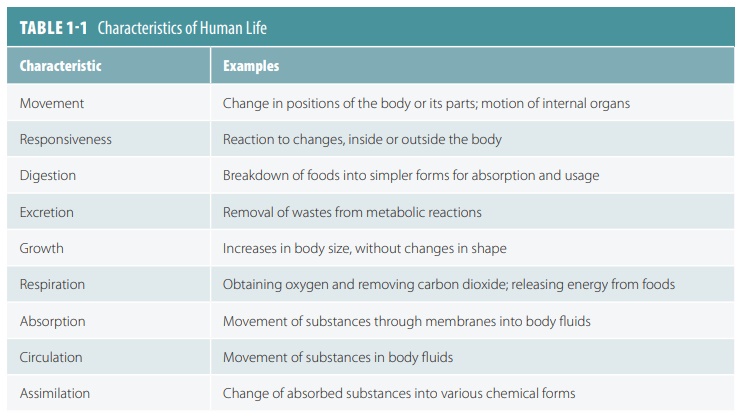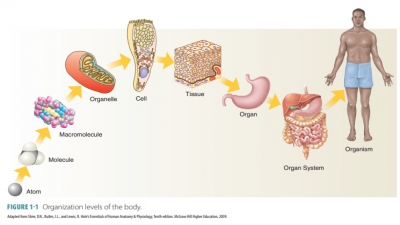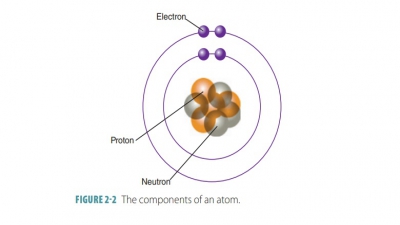Essentials for Life
| Home | | Anatomy and Physiology | | Anatomy and Physiology Health Education (APHE) |Chapter: Anatomy and Physiology for Health Professionals: Levels of Organization : Introduction to Human Anatomy and Physiology
1. What factors are necessary to sustain life in humans? 2. What elements are needed by the body for survival? 3. Describe metabolism and the effect of atmospheric pressure on the body.
Essentials for
Life
Humans and other animals share
many similar traits. All body cells are interdependent as we are multicellu-lar
organisms. Vital body functions occur over various organ systems, which
contribute to overall body health.
Boundaries
The body’s boundaries are
maintained to keep the internal environment distinct from the external
environment. All body cells are surrounded by selectively permeable membranes.
The skin encloses and protects the body as a whole from factors such as
dryness, bacteria, heat, sunlight, and chemicals.
Movement
Movement of the body is achieved
via the muscular and skeletal systems. Inside the body, the cardiovascular, digestive,
and urinary systems too use movement to transport blood, food materials, and
urine. Even cells move, such as when muscle cells move by shortening, which is
known as contractility.
Responsiveness
The ability to sense and respond
to environmental stimuli (changes) is known as responsiveness, which is also referred to as excitability. An example is the way we quickly withdraw our hands
from a hot saucepan. Nerve cells are highly excitable. They com-municate with
rapid electrical impulses, and, there-fore, the nervous system is the most
responsive of all body systems. However, all body systems have some degree of
excitability.
Digestion
Humans require specific nutrients
to remain healthy and to grow and develop normally. Energy is gained from the
breakdown, digestion, absorption, and assimilation of food. Digestion breaks
down food materials to simple, more easily absorbed molecules. Absorbed
nutrients move throughout the body’s circulation. Nutrient rich blood is
distributed, via the cardiovascular system, to the entire body. Respiration
brings in oxygen that works with nutrients to grow and repair body parts. The
unusable parts of these processes are then excreted as waste.
Metabolism
The body’s metabolism controls
all these processes. It includes all chemical reactions inside body cells, the
breaking down of substances into simpler forms (catabolism), creating more complex cellular componentsfrom simpler
substances (anabolism), and the use
of nutrients and oxygen to produce energy rich adenosine triphosphate (ATP)
molecules (via cellular respiration).
In metabolism, nutrients and
oxygen from the digestive and respiratory systems are circulated to all body
cells. Hormones from the endocrine system glands have strong regulatory control
over metabolism.
Excretion
The process of removing wastes
from the body is known as excretion.
Nonessential substances that are produced during digestion and metabolism must
be removed. The digestive system removes food compo-nents that cannot be
digested via the feces. The urinary system removes urea and other metabolic
wastes containing nitrogen via the urine. The blood carries carbon dioxide to
the lungs for it to be exhaled.
Reproduction
Reproduction is a process that
occurs at several levels. At the cellular level, reproduction means cell
division. Cells divide to produce two identical daughter cells, which the body
uses for growth and repair. At the organism level, the human reproduction
system unites a sperm with an egg. A fertilized egg is formed, devel-oping into
a baby inside the body of the mother. The function of the production of
offspring is controlled by endocrine system hormones. Reproductive structures
differ between the sexes, with the female structures providing a fertilization
site for the male sperm cells. The female reproductive structures protect the
developing fetus and nurture its growth until birth.
Growth
An increase in the size of an
organism or its body parts is called growth.
Most often, growth is achieved by an increase in the amount of cells. In fact,
even when the cells do not divide, they can increase in size. True growth
occurs when constructive activities occur more quickly than destructive
activities. The various characteristics of life are listed in TABLE 1-1.

Survival
Human beings need several
substances for survival: food (nutrients), water, oxygen, pressure, and heat in
specific quantities and with specific qualities.
Nutrients
Food provides nutrients for
energy, growth, and regulation of the chemical reactions in the body. Some of
these chemicals are used as energy sources or sup-ply the raw materials needed
for building new living matter; other chemicals help to regulate vital
chemical reactions. Plant-based foods contain high levels of carbohydrates,
vitamins, and minerals. Carbohydrates are the primary energy fuel for body
cells. Certain vitamins and minerals are needed for chemical reac-tions inside
cells and for oxygen transport in the blood. Calcium is a mineral that assists
in making bones harder and is needed for blood clotting. Animal-based foods
contain high levels of proteins and fats. Proteins are the most essential
component required for build-ing cell structures. Fats assist in this process
and are a great source of energy-providing fuel for the body.
Water
Water is required for metabolic
processes and makes up most of the body’s actual structure, transporting
substances and regulating temperature. It accounts for 60% to 80% of body
weight and is the most abundant chemical in the body. Water allows chemical
reactions to occur and is also the fluid base for secretions and excretions.
Water is mostly obtained from ingested liquids or foods, and is lost in the
urine, by evapora-tion from the lungs and skin, and also in other body
excretions.
Oxygen
Oxygen is a gas that drives
metabolic processes by releasing energy from food that is consumed and by
bringing nutrients to cells throughout the body. This energy release involves oxidative reactions, for which oxygen is
required. Therefore, all nutrients require oxygen for them to be effectively
used. Human cells only survive for a few minutes without oxygen. Oxygen makes
up approximately 20% of the air that we breathe. It is made available to the
blood and body cells by both the respiratory and cardiovascular sys-tems.
Appropriate amounts of oxygen sustain life, but even oxygen may be toxic in
excessive quantities.
Atmospheric Pressure
Appropriate pressure,
specifically atmospheric pres-sure, is essential for breathing and gas
exchange. Blood pressure is a form of hydrostatic pressure that forces the
blood through the veins and arteries. Atmospheric pressure may be defined as
the force that air exerts upon the body’s surface. Gas exchange, in higher
alti-tudes, may be insufficient to support cellular metabo-lism because at
these altitudes, atmospheric pressure is lower and the air is thinner. At sea
level, the average atmospheric pressure is 760 mm of mercury (Hg).
Body Temperature
Heat energy is produced from
metabolic reactions, influencing their speed. The muscular system generates
the most body heat. Body heat is measured as tempera-ture. Normal body
temperature must be maintained if chemical reactions are to sustain life
continually. If the temperature is too high, chemical reactions occur very
quickly, and proteins in the body change shape and cease functioning. If body
temperature drops below 98.6°F (37°C), metabolic reactions slow down and
eventually stop. Death may occur also because of either variation in temperature.
1. What
factors are necessary to sustain life in humans?
2. What
elements are needed by the body for survival?
3. Describe
metabolism and the effect of atmospheric pressure on the body.


